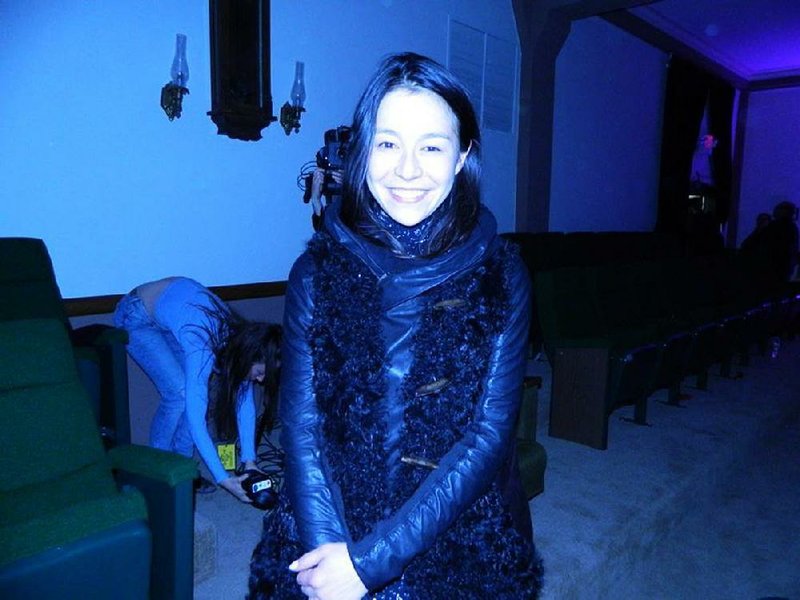Rock climber Alex Honnold seems the physical embodiment of fearlessness. An expert at free solo climbing, he scales rock walls by himself without the benefit of ropes or a partner.
This is crazy.
Even practiced mountaineers refrain from this because the thrills and the sense of achievement are negated by the prospect of a single mistake or circumstance beyond one's control leading to certain death. Nonetheless, the directors of Free Solo, a documentary about Honnold and his accomplishments, say he's more than an adrenaline junkie.
"What was important to us was the idea that [he] was this kid who was afraid of everything," co-director Elizabeth Chai Vasarhelyi says from Los Angeles. "He was too afraid to talk to somebody else to be his partner, so that's why he began free soloing ... . He was too scared to be hugged. He was too scared to eat vegetables. That this loner, this really awkward and very intelligent kid should work on himself to slowly, slowly confront his fears was amazing."
"We don't like psychobabble," she adds.
"We tried to represent him honestly," says Jimmy Chin, Vasarhelyi's husband, who shares directing credit with her. "We wanted him to be no more or less than who he is."
Despite being in what many would consider a widow-making profession, the movie documents Honnold's developing relationship with Sanni McCandless and deals with the challenges of falling in love with someone who takes risks most do not.
"That's a testament to her," Vasarhelyi says. "She's incredibly emotionally intelligent about those feelings. She's self-confident enough to stand up for herself and also to love him for who he is. I think that's a revelation for Alex. I think there's also a weird parallel for the film crew as well in that these are his really close friends who are willing to stick around as well even if he doesn't free solo. They'd prefer he didn't, but they're committed because of who [he] is, so it's OK. This solo endeavor actually became about connecting with people."
In the film's press kit, Chin explains that he and his collaborators didn't want to give Honnold "Kodak courage" by leading him to take risks he wouldn't when the cameras aren't running.
"We were very lucky with National Geographic as partners," Vasarhelyi says. "Given the kind of company they are, they understood the ideas behind this film, and they were willing to take that big leap with us. They were willing to make their very big investment a big secret for years. They could never talk about it because of the pressure it would create for Alex."
This pressure was especially great because the climax of the movie features Honnold scaling Yosemite's El Capitan, a 3,000-foot vertical rock wall that has defied previous climbers. While some might have considered the Herculean task, the temptation to conquer it using free solo techniques has disappeared because the rock doesn't have many spots that are easy to grip.
One large portion is even dubbed "Teflon."
"Nobody had even talked about soloing El Cap before," Chin says. "It wasn't even in [the] dialogue of the best climbers in the world. It was so far beyond what people were imagining."
One of the highlights of Free Solo is watching a terrified camera operator who can't look into his viewfinder because he's afraid that Honnold might fall to his death. Free Solo offers several other sequences seemingly designed to discourage any "hold my beer" moments. A long montage lists other free solo climbers who aren't around anymore, and the film shows Honnold planning his climb for months, seemingly mapping out every millimeter.
"The mountains have taken a lot of lives," Vasarhelyi says. "[He prepares] more than we do in our car when we're driving. Alex is so practiced and diligent and disciplined and thought out. He doesn't want to die. He's memorized every move."
Chin and the other camera operators who work with him are also climbers, as well as friends with Honnold. This enables them to follow Honnold as he scales a wall while a waterfall produces a rainbow.
You have to leave the city for a shot like that, even with modern technology.
Obtaining this footage is a formidable challenge because drones are illegal in the national parks such as Yosemite. Choppers are illegal as well. Telephoto lens and surgical precision were the answer. On the day of the shoot, Chin and a 15-person crew, including four other camera operators, maneuvered to stay out of Honnold's eye line (and to keep their ropes out of each other's shots) as he climbed.
"Our high-angle team is carrying a lot of rope," Vasarhelyi says. "Rope is really heavy."
Chin and Vasarhelyi had an earlier hit with 2015's Meru, about Chin and his peers trying to master the Himalayan wall. In that film, Chin refrained from free solo work, and nobody else would be likely to try it anytime soon.
He tends to do most of the shooting, and she handles the editing and post production work. Nonetheless, their division of labor is somewhat fluid.
"Jimmy's feedback is important, but he doesn't get into the [post-shooting] weeds as much," Vasarhelyi says.
Meru and Free Solo have received warm reviews, which the filmmakers credit to their compelling subject matter.
"Alex brought such craft to this" Vasarhelyi says. "Jimmy and our high-angle team brought ... craft as well. It pushed them to have to adjust to this. As directors, Jimmy and I knew this film couldn't work without an emotional heart. Alex is a fascinating character. You couldn't write this character."
MovieStyle on 11/02/2018

